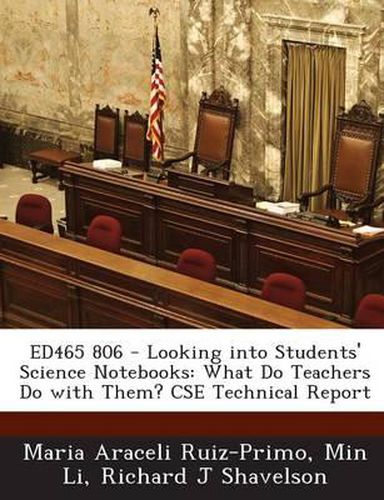Readings Newsletter
Become a Readings Member to make your shopping experience even easier.
Sign in or sign up for free!
You’re not far away from qualifying for FREE standard shipping within Australia
You’ve qualified for FREE standard shipping within Australia
The cart is loading…






This paper proposes the use of students science notebooks as one possible unobtrusive method for examining some aspects of teaching quality. Students science notebooks were used to examine the nature of instructional activities in their science classrooms, the nature of teachers’ feedback, and how these two aspects of teaching were correlated with student achievement. Researchers examined the characteristics of science notebooks for 6 students from each of 10 fifth-grade classrooms. Each entry was analyzed. Results indicate that raters can consistently classify students notebooks in spite of the diversity of the forms of communication (written, schematic, or pictorial). They can also consistently score the quality of a students communication, conceptual, and procedural understanding and the quality of a teachers’ feedback to the student. The intellectual demands of the tasks required by the teachers were, in general, low. Teachers tended to ask students to record the results of an experiment or to copy definitions. Low student performance scores across two curriculum units revealed that students communication skills and understanding were far from the maximum score and did not improve over the course of instruction during the school year. Teacher provided little, if any, feedback. Only 4 of the 10 teachers provided any feedback to students notebook entries, and when feedback was provide, comments took the form of a grade, checkmark, or a code phrase. It is concluded that the benefits of science notebooks as a learning tool for students and a source of information for teachers were not exploited in the science classrooms studied. An appendix describes the performance assessments these students used. (Contains 4 figures, 7 tables, and 25 references.) (Author/SLD).
$9.00 standard shipping within Australia
FREE standard shipping within Australia for orders over $100.00
Express & International shipping calculated at checkout
This paper proposes the use of students science notebooks as one possible unobtrusive method for examining some aspects of teaching quality. Students science notebooks were used to examine the nature of instructional activities in their science classrooms, the nature of teachers’ feedback, and how these two aspects of teaching were correlated with student achievement. Researchers examined the characteristics of science notebooks for 6 students from each of 10 fifth-grade classrooms. Each entry was analyzed. Results indicate that raters can consistently classify students notebooks in spite of the diversity of the forms of communication (written, schematic, or pictorial). They can also consistently score the quality of a students communication, conceptual, and procedural understanding and the quality of a teachers’ feedback to the student. The intellectual demands of the tasks required by the teachers were, in general, low. Teachers tended to ask students to record the results of an experiment or to copy definitions. Low student performance scores across two curriculum units revealed that students communication skills and understanding were far from the maximum score and did not improve over the course of instruction during the school year. Teacher provided little, if any, feedback. Only 4 of the 10 teachers provided any feedback to students notebook entries, and when feedback was provide, comments took the form of a grade, checkmark, or a code phrase. It is concluded that the benefits of science notebooks as a learning tool for students and a source of information for teachers were not exploited in the science classrooms studied. An appendix describes the performance assessments these students used. (Contains 4 figures, 7 tables, and 25 references.) (Author/SLD).